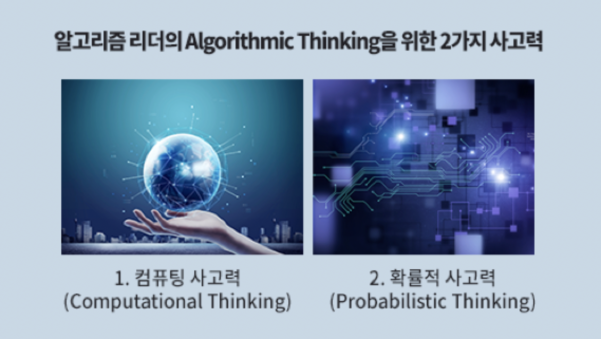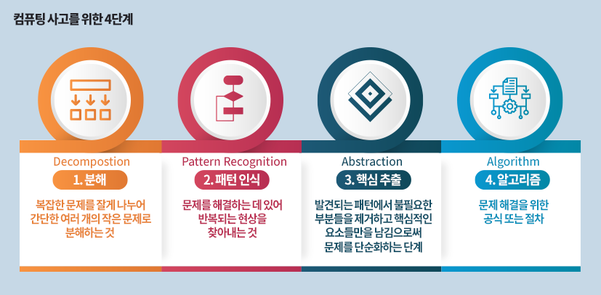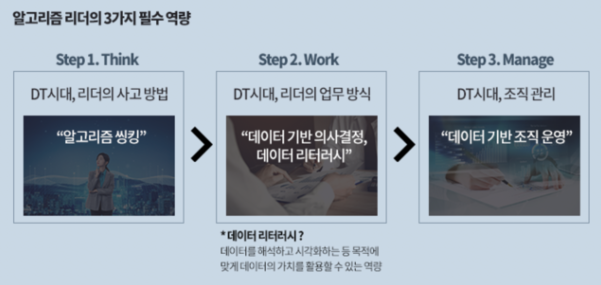
The digital transformation of companies was brought about by the Fourth Industrial Revolution in terms of speed, scope, and system It is rapidly evolving based on innovative IT technology. It is expected that this will have a direct impact on all industries, resulting in changes in the entire system including production, management, and governance. Therefore, companies must respond quickly by utilizing their internal core competencies and prepare elements for differentiated competitive advantage.
Digital innovation from a resource-based perspective
In this trend of change, a company's IT technology capabilities viewed through the Resource Based View theory can be said to be one of the core competencies and success factors within a company for sustainable management. For companies, specialized IT technology has become an important competitive factor in the current digital transformation era. In addition, the effective IT technology policy of a company has an important meaning as a management strategy to strengthen the competitiveness of a company.
Here, the resource-based perspective (RBV) theory was first proposed by Penrose in 1959 in his book, followed by Wernerfelt in 1984, Prahalad and Hamel in the 1990s, Barney in 1991 ( Barney). It has been developed representatively by the core theory of management strategy is that the difference in internal factors (self-competitiveness) of individual companies is a key factor that determines the competitiveness of a company rather than external factors such as which industry group a company is included in.
This is in line with the findings of Darwin's theory of evolution that we know well that 'strong individuals do not survive, but individuals that adapt well to environmental changes survive and eventually become strong individuals.'
It is important to pay attention to the basic premise that the inner force to respond to change' must be strong in order to adapt well to environmental changes as stated in the theory. For sustainable management, companies must devise a new strategy for how to utilize and develop internal IT resources and human capabilities by innovating existing business processes, culture, and organization to meet the era of digital transformation. To this end, I emphasize that companies need full support and continuous attention based on the firm's willingness to innovate, the CEO, who is the chief decision maker, for the successful introduction of digital transformation and differentiated IT technology.
Key leaders in the organization should execute step-by-step digital transformation strategies through 'Algorithmic Leadership' and spread them across the enterprise to lead change.
What is algorithmic leadership and why is it necessary?
The algorithmic leader newly emerged here refers to a person who creates creative results by applying algorithms to their own decision-making and operation methods as the optimal method in the complex digital age.
Many corporate CEOs do not accept that the beginning of the transformation is the leader themselves in the organization, and are relentlessly introducing disruptive technological innovations. Leaders are faced with a situation in which they are unable to make optimal decisions about the situational problems encountered in the process of implementing step-by-step digital transformation strategies. Therefore, even from now on, core leaders in the organization should seek opportunities to find solutions through algorithmic leadership, moving away from the existing analog leadership.
Algorithm is derived from the name of al-Khwrizm, the father of algebra, who created the first math book in Persia. Such an algorithm is a formal expression of a set of procedures or methods determined to solve a certain problem, and is now used in all areas from online search to artificial intelligence.
In the era of digital transformation, the importance of algorithms is increasing. Futurist Mike Walsh, who currently runs a global consulting company and provides management advice to Fortune 500 companies in the world, recently published a book called 'The Algorithmic Leader'.
According to author Mike Walsh, Algorithmic Leaders make decisions in very different ways, leveraging both computational and probabilistic thinking techniques.

The Algorithmic Leader's Thinking Approach
Computational thinking is the first basis for algorithmic thinking - a concept popularized by Jeannette Wing, a professor of computer science at Carnegie Mellon University. It is a series of thought processes that define the problem and present the optimal solution.
For example, at Google, computing thinking is explained in four steps: 
The first step, decomposition, means breaking down a complex problem and breaking it down into a number of simple, small problems.
The second step, pattern recognition, refers to finding repetitive phenomena in solving a problem, and pattern recognition is a method of grasping the pattern after dividing the problem in small units from the process of decomposition.
The third step, abstraction, removes unnecessary parts of the pattern found and leaves only the key elements.
The last and fourth step, developing an algorithm, is a formula or procedure for solving a problem. As an easy example, the flow chart that you learn in math class or computer class is an algorithm, and it can be said that it is a good example of the use of the AlphaGo algorithm that won the battle of Go against Lee Sedol.
In the case of Go, the number is too large, and even a computer cannot calculate the number of all cases in a short time according to the number of counterparts responded, so predict the number of cases as much as possible and find the optimal number among them. Based on this process, AlphaGo repeatedly plays the game for every number of moves played by the opponent, and it is an example of applying a very complex algorithm.
The second basis for algorithmic thinking is probabilistic thinking, which is a thinking process in which a hypothesis is set, then various information is verified probabilistically, and the probability is determined based on the result.
In the age of big data, probabilistic thinking is like the ability to decrypt data. Therefore, probabilistic thinking reduces regret and anxiety when the leader chooses in a situation where there is high uncertainty, and selects the case by comparing the case with high probability, so it is much more accurate than the decision of an analog leader who tries to solve a problem based on experience or intuitive sense. It is possible to predict the future and solve problems. In other words, analog leaders rely on experience or sense to guess the future, whereas algorithm leaders gain insight into future predictions based on in-depth data analysis.
Essential Competencies
Based on the above-mentioned contents, the three essential competencies to become an algorithm leader are summarized as follows. First, algorithmic thinking based on algorithms. Second, the ability to use the value of data for a purpose, such as interpreting and visualizing data for data-driven decision making. Third, it can be said that data-based organization management capabilities that manage organizations based on algorithms are needed. In addition, if you turn yourself into an algorithmic leader, you will expand to the people (team members) or organizations you work with, and ultimately to the world around you.
In the current competitive environment, where competition is intensifying and rapidly changing along with external changes such as COVID19, it is necessary to break away from the conventional view that companies were paying major attention to the external environment. Based on the core competencies strengthened through internal resources, it is necessary to cultivate another internal strength (algorithm leader) to find the source of corporate development and success.
In addition, in order to lead sustainable management and sustained competitive advantage in the era of digital transformation, it is necessary to establish a strategic approach to discover and develop differentiated competitive advantage elements based on algorithm leadership' tailored to the characteristics of each company. In other words, rather than sticking to and following the existing business process, it is necessary to grasp the latest technologies and trends and recognize the convenience and benefits of rapidly changing ICT technologies. Through this, it will be necessary to conduct corporate management with a value in providing more specialized and specialized products and services to customers through digital transformation.
This article originally appeared in Korean in IT Chosun.

